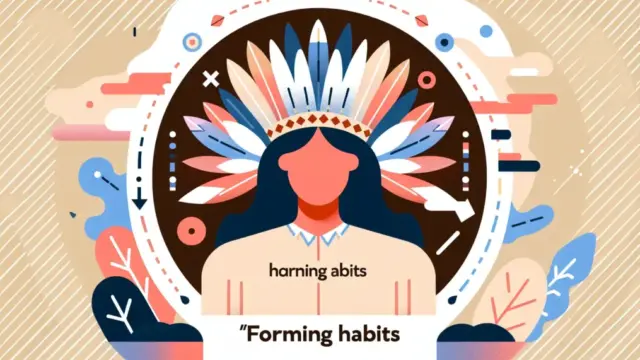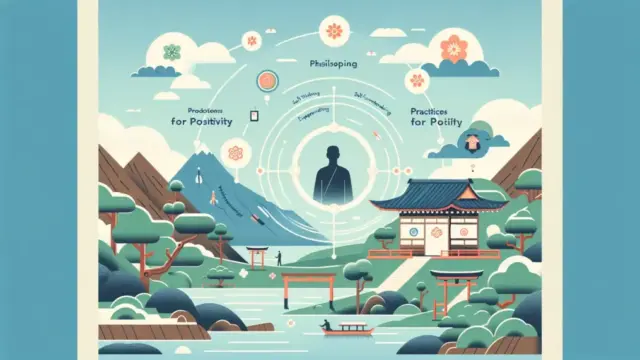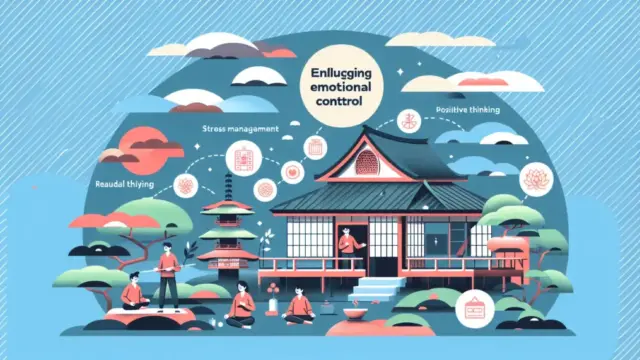Self-awareness is the foundation for crafting a fulfilling life. By deeply understanding who you are, you can gain clarity on the kind of life you want to lead and set meaningful goals. In this article, we’ll explore the steps to begin your life design journey rooted in self-awareness, along with practical advice. Let’s dive into how to identify your values and objectives, and how to create a concrete plan from there.
Life is always in flux, which makes cultivating a flexible mindset essential. By learning to embrace failure as a part of the journey and developing a mindset that adapts to change, you can design a better life. So, are you ready to draw up your own blueprint for life?
- Learn methods to deepen your self-awareness and clarify your values.
- Understand the importance of SMART goal-setting and how to balance short-term and long-term goals.
- Discover specific ways to cultivate a mindset that learns from failure and adapts to change.
Understanding Yourself: The First Step in Life Planning
To enhance the quality of your life, it’s essential to start with self-understanding. By deepening your self-awareness, you can clarify what you truly desire and the values you hold dear, allowing you to create a life plan that aligns with these insights. In this chapter, we will delve into methods for enhancing self-awareness and strategies for clarifying your values. By getting to know yourself better, you can set more meaningful goals and lay the foundation for a fulfilling life.
Ways to Enhance Self-Awareness
The first step in deepening self-awareness is to become aware of your emotions and thoughts. Start by observing how you feel in various situations throughout your daily life. For instance, keeping a journal can help you organize your emotions and understand your triggers. Additionally, being open to feedback from others can also serve as a valuable tool for self-discovery.
Using self-analysis tools and tests can be particularly effective as well. Personality assessments and value tests can help you identify your strengths and weaknesses. This greater understanding of yourself will provide clarity on the direction of your life planning.
- Make it a habit to observe your emotions and thoughts
- Use journaling to sort out your feelings
- Engage in self-analysis through personality assessments and value tests
Clarifying Your Values
Clarifying your values is crucial for effective life planning. Understanding what you hold dear and believe in can serve as a guide when making future choices and setting goals. Begin by reflecting on your past experiences and the moments that have moved you. Consider the instances that brought you joy or a sense of fulfillment; these reflections can illuminate your core values.
Additionally, consciously making choices that align with your values can aid in this clarification process. In your daily life, pay attention to the decisions you make and assess whether they resonate with your values. This practice will help you uncover what truly matters to you.

If you found this article interesting, you might also enjoy our piece on “Creating a Blueprint for Your Life: Steps from Self-Awareness to Goal Setting.” It offers practical approaches to setting specific goals after deepening your self-awareness, assisting you in designing a more fulfilling life.
- Reflect on your values based on past experiences
- Make choices in daily life that align with your values
- Understand how clarifying your values impacts your life planning
The Importance of Goal Setting and Steps to Achieve It
When it comes to designing our lives, setting goals is an essential element that we can’t overlook. The clearer our goals are, the more defined our path becomes, making it easier to recognize our personal growth. In this section, we’ll delve into effective goal-setting strategies and the steps necessary to achieve those goals. We’ll particularly explore the significance of SMART goals and how to strike a balance between short-term and long-term objectives.
SMART Goals
One of the most effective ways to set goals is by adhering to the SMART principles. SMART stands for Specific, Measurable, Achievable, Relevant, and Time-bound. By considering these five elements, you can create goals that are both attainable and impactful.
For instance, saying “I want to be healthy” is quite vague, but specifying “I will exercise for 30 minutes every day” makes the goal much more concrete and achievable. It’s also crucial to measure your progress. Regularly reflecting on your advancements can help maintain your focus and commitment to your goals.
- The importance of setting specific goals using the SMART principles
- Why measurable goals foster a sense of accomplishment
- How regular progress checks aid in achieving goals
Balancing Short-Term and Long-Term Goals
In goal setting, finding a balance between short-term and long-term objectives is vital. Short-term goals serve as stepping stones toward your long-term vision, so it’s essential to set small, achievable targets. This approach helps you maintain motivation by providing a sense of accomplishment along the way.
On the other hand, long-term goals define the direction of your life. By clarifying your ideal self and what you want to achieve, you can give meaning to your daily actions. By effectively combining short-term and long-term goals, you can create a roadmap for a fulfilling life.

If you’re interested in this topic, you might also enjoy our article “How to Find Goals That Suit You! Effective Steps to Change Your Life.” It offers a detailed guide on reflecting on your values and setting specific, achievable goals. Be sure to check it out to deepen your understanding of goal-setting strategies!
- Short-term goals are crucial as steps toward long-term goals
- Achieving small goals helps maintain motivation
- Long-term goals play a key role in guiding your life’s direction
Cultivating a Flexible Mindset
Having a flexible mindset is crucial for planning a fulfilling life. In our rapidly changing modern society, unexpected events can arise at any moment. During these times, the ability to think flexibly and adapt is essential. In this chapter, we will explore how to learn from failure and develop a mindset that embraces change. By nurturing a flexible way of thinking, you can pave the way for a more rewarding life design.
Learning from Failure
Failure is an inevitable part of life, but how we respond to it makes all the difference. Cultivating the ability to learn from failure allows us to turn setbacks into opportunities for growth. The first step is to face challenges without fear of failing. When we take on new endeavors, failures are bound to occur, but those experiences are what fuel our development.
It’s also important to analyze our failures and reflect on what went wrong. By objectively examining our actions and decisions, we can consider how to apply those lessons in the future, leading to personal growth. Additionally, sharing our failures with others can provide valuable insights and advice, further enriching our learning experience.
- The importance of embracing challenges without fear of failure
- Reflecting on failures to learn and improve
- How sharing experiences enhances our learning
Developing a Mindset for Adaptation
To adapt to change, maintaining a positive mindset is essential. Even when things don’t go as planned, keeping a forward-thinking attitude is crucial. By embracing change and accepting new situations, we can uncover fresh opportunities.
Moreover, having a flexible mindset contributes to enhanced problem-solving skills. When faced with difficult circumstances, it’s vital to consider different perspectives and seek solutions. This approach leads to better decision-making. By adopting a flexible way of thinking, you’ll find your life design becomes richer and more fulfilling.
- The significance of sustaining a positive mindset
- Discovering opportunities through acceptance of new situations
- The connection between flexible thinking and improved problem-solving skills
Creating a Concrete Life Plan
To lead a more fulfilling life, having a concrete plan is essential. By clearly defining your goals and values, and creating an action plan based on them, you’ll be able to identify achievable steps toward your aspirations. In this chapter, we’ll delve into how to craft an effective action plan and the metrics you can use to measure your success. By solidifying your life design, you’ll be better equipped to envision a more enriched future.
Crafting Your Action Plan
The first step in creating an action plan is to clarify your goals. When your goals are well-defined, it becomes easier to outline specific actions needed to achieve them. Next, break down your goals into smaller, manageable steps and detail the specific actions you need to take. This approach makes it clear how your daily activities are linked to your objectives.
It’s also crucial to remain flexible with your action plan. By adjusting your plan in response to new information or changes in circumstances, you can continuously take the most effective actions. Regularly reviewing your progress and updating your action plan as necessary will help you achieve your goals more efficiently.
- Clarifying your goals is the first step in crafting your action plan
- Break down your goals into specific, actionable steps
- Regular reviews and updates are essential
Metrics for Measuring Success
To measure success, it’s vital to set specific metrics. Clear metrics allow you to evaluate your progress and achievements objectively. For instance, quantifying how much you’ve accomplished against your short-term goals can help maintain your motivation.
Additionally, consider both quantitative and qualitative metrics. Establishing indicators that reflect your personal growth and learning can provide a sense of fulfillment. Since the definition of success varies from person to person, it’s important to set metrics that resonate with you.

If you found this article interesting, you might also want to check out “Goal Setting for Personal Development: Practical Examples and Methods for Success”. It offers insights into effective goal-setting strategies and practical approaches that can aid in your life planning.
- Setting specific metrics clarifies your progress
- Both quantitative and qualitative assessments are important
- Finding metrics that align with your definition of success is crucial
Conclusion
Designing your life requires a deep understanding of yourself, goal setting, and a flexible mindset. By gaining insight into your own values and the future you desire, you can create a concrete action plan tailored to your aspirations. Additionally, nurturing a flexible way of thinking allows you to adapt to changes more easily. When you combine these elements, you lay a strong foundation for building a fulfilling life.
Setting your goals and having metrics to track your progress can provide you with a sense of achievement and a tangible experience of personal growth. Remember, life design is not a one-time effort; it’s an ongoing process that involves regular reviews and adjustments. We encourage you to take charge of your own life design.
- Self-understanding is the first step toward designing a fulfilling life.
- SMART goals and action plans are key to success.
- A flexible mindset helps you adapt to change and fosters growth.
Take the first step to start designing your life. Share your thoughts in the comments on how you plan to make your future better!


















































Comment